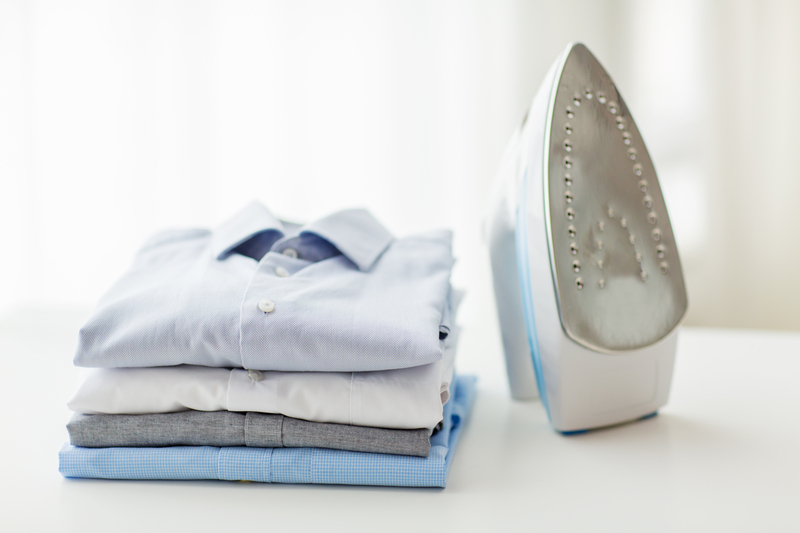Air Quality as the Pillar for Healthier Interiors
Posted on 22/08/2025
Air Quality as the Pillar for Healthier Interiors
Indoor air quality is far more important than most people realize. As we spend a significant portion of our lives indoors -- at home, work, and recreational spaces -- the quality of the air we breathe inside has a direct impact on our wellbeing. Air quality as the pillar for healthier interiors is a progressive concept that emphasizes the vital role played by clean, pollutant-free air in creating comfortable and healthy living and working environments.
Why Air Quality Matters Indoors
Most modern buildings are constructed to be airtight for energy efficiency, yet this can inadvertently trap pollutants inside. Good indoor air quality is crucial because poor air can trigger respiratory issues, aggravate allergies, reduce productivity, and cause chronic health problems over time. Maintaining excellent interior air quality is foundational for both immediate comfort and long-term health.
- Health Benefits: Clean air reduces risks of asthma, allergies, and other respiratory diseases.
- Enhanced Productivity: People perform better and feel more energized in well-ventilated, pollutant-free interiors.
- Comfort and Wellbeing: Good air quality neutralizes unpleasant odors and maintains optimal humidity and temperature, creating a welcoming atmosphere.
Understanding Indoor Air Quality (IAQ)
Indoor Air Quality (IAQ) refers to the cleanliness and condition of air within and surrounding buildings. It is determined by the quantity of dust, allergens, chemical pollutants, biological contaminants, and ventilation in an interior space.
Primary Pollutants Affecting Indoor Areas
Several pollutants can compromise healthy indoor air quality. Identifying and managing these contaminants is essential for creating healthier interiors.
- Particulate Matter (PM): Tiny particles from dust, smoke, and cooking can penetrate deep into the lungs, causing respiratory problems.
- Volatile Organic Compounds (VOCs): Gases emitted from paints, furnishings, cleaning products, and building materials can cause headaches, dizziness, and even damage to internal organs.
- Mold and Biological Pollutants: Mold, bacteria, viruses, and dust mites thrive in humid environments, leading to allergies, infections, and overall poor health.
- Carbon Monoxide (CO) and Nitrogen Dioxide (NO2): Poor ventilation from gas stoves and heaters can cause the buildup of these dangerous gases.
- Formaldehyde: Found in pressed wood products and some textiles, it is a well-known irritant and potential carcinogen.
The Benefits of Clean Indoor Air
A focus on air quality as the pillar for healthier interior environments is not just a buzzword. It has real, measurable advantages:
Physical Health
- Decreased risk of asthma attacks and allergic reactions
- Lower incidence of respiratory infections and chronic illnesses
- Reduced exposure to carcinogens
Mental Wellbeing
- Enhanced cognitive performance
- Better sleep quality
- Less fatigue and mental fog
Productivity and Comfort
- Fewer sick days and absenteeism
- Greater concentration and comfort

How to Improve Air Quality for Healthier Interiors
Transforming air quality into the foundation for healthier interior spaces is achievable through several strategies. The first step is awareness, followed by practical solutions and regular monitoring.
1. Ventilation
Proper ventilation is vital for maintaining fresh indoor air. It dilutes and removes indoor pollutants. Natural ventilation -- opening windows and doors -- is the simplest method, but not always practical or sufficient.
- Mechanical ventilation: Modern homes and offices benefit from HVAC systems equipped with high-efficiency filters that not only move air but also clean it of contaminants.
- Exhaust fans and ducts: Kitchens and bathrooms should have exhaust systems to remove odors, humidity, and pollutants at the source.
2. Air Filtration and Purification
High-Efficiency Particulate Air (HEPA) filters and air purifiers can eliminate fine particulate matter, allergens, and even some bacteria and viruses.
- Use portable air purifiers in bedrooms and living areas for targeted air cleaning.
- Incorporate whole-house filtration as part of HVAC upgrades.
3. Reduce Sources of Indoor Pollution
Preventing pollutants from entering the indoor environment is often easier than removing them later:
- Use low-VOC paints, varnishes, and furniture.
- Avoid aerosol sprays -- choose pump sprays or solid forms for cleaning and freshening.
- Minimize the use of synthetic air fresheners and scented candles.
- Store chemicals, solvents, and gasoline outside living areas.
4. Manage Moisture and Control Mold
Humidity control is critical because mold and dust mites thrive in moist environments:
- Keep indoor humidity between 30% and 50% using dehumidifiers or air conditioners.
- Promptly fix plumbing leaks and dry wet areas within 24-48 hours.
- Clean and maintain gutters and roof drains.
5. Houseplants: Nature's Air Purifiers
Certain houseplants such as peace lily, spider plant, and snake plant naturally filter toxins and add oxygen. However, it is important to note that while plants improve some aspects of indoor air, they cannot replace proper ventilation and mechanical filtration, especially for larger spaces.
6. Regular Cleaning and Maintenance
Routine cleaning removes dust, pet dander, and pollutants before they accumulate:
- Vacuum with a HEPA-filtered vacuum cleaner
- Wash bedding and curtains regularly
- Dust with damp cloths to avoid stirring up particulates
- Change air filters in HVAC systems as recommended
7. Monitor Indoor Air Quality
Technological advances now allow homeowners and businesses to track indoor air quality in real time:
- Use indoor air quality monitors for CO, PM2.5, humidity, and VOCs
- Set up smart systems that alert you when pollutant levels rise
The Role of Building Design and Materials
Building design plays a crucial role in supporting healthier interior air quality. Architects and interior designers are increasingly emphasizing materials and layouts that encourage healthy airflow and minimize pollutant accumulation.
- Low-emission materials: Use building and decorating materials certified for low chemical emissions.
- Open layouts: Maximize cross-ventilation and natural light.
- Smart location choices: Site new buildings away from major roadways or industrial sources of pollution when possible.
- Green building certifications: Pursue certifications such as LEED or WELL for proven healthy indoor air standards.
The Impact of Modern Lifestyles
Increased urbanization, smaller living spaces, and the use of air-tight windows and doors intensify the impact of indoor air pollutants. Technology can help, but awareness and adaptation of good habits remain key.
- Work from home? Take breaks outside and ventilate regularly.
- Update older buildings with new, energy-efficient, and health-conscious systems.
Special Considerations: Children, Seniors, and Vulnerable Groups
Children, the elderly, and those with pre-existing health conditions are especially susceptible to poor indoor air quality. Their immune systems can be compromised or developing, making healthy indoor air even more critical.
- Prioritize ventilation and pollutant reduction in nurseries, schools, and care homes.
- Establish clear air quality management protocols in public and commercial buildings.
Myths and Misconceptions About Indoor Air Quality
- Myth: New and modern buildings always have better air quality.
Reality: Many modern materials emit VOCs and require diligent ventilation and maintenance. - Myth: Air fresheners make air healthier.
Reality: Most air fresheners mask odors and add chemicals; they don't remove contaminants. - Myth: You can't improve indoor air without costly equipment.
Reality: Simple changes like regular cleaning, ventilation, and using houseplants have a significant positive effect.

The Future: Smart Technology for Healthier Interiors
The next generation of air quality solutions incorporates advanced sensors, automation, and integration with building management systems:
- Smart air purifiers adjust operation based on real-time pollution levels.
- HVAC systems connect with mobile apps to alert users about filter changes or ventilation needs.
- IoT-enabled air sensors provide actionable insights and trend data on indoor air health.
Embracing smart technology in homes and offices can streamline the process, making it easier to maintain optimal interior air quality and thereby overall health.
Conclusion: Air Quality--A Foundation for Living Well
Air quality as the pillar for healthier interiors is not only a matter of comfort, but a stepping stone to long-term wellness, productivity, and quality of life. With growing awareness and access to solutions, individuals, businesses, and communities can actively create environments where people thrive.
By prioritizing clean air, investing in ventilation and filtration, and making mindful choices on materials and maintenance, we build more than just walls and roofs -- we establish sanctuaries for vitality and well-being. Ultimately, taking action to improve indoor air quality is one of the most significant steps we can take on the journey to healthier, happier lives indoors.
Take Action Today:
- Assess your indoor air quality and identify key sources of pollution.
- Upgrade your ventilation and filtration systems.
- Incorporate regular air quality monitoring into your home or office routine.
- Advocate for policies and designs that put interior air quality and health first.
Remember: The air you breathe inside is just as important -- if not more -- than the air outside. Make air quality the foundation of your healthy interior lifestyle today!



